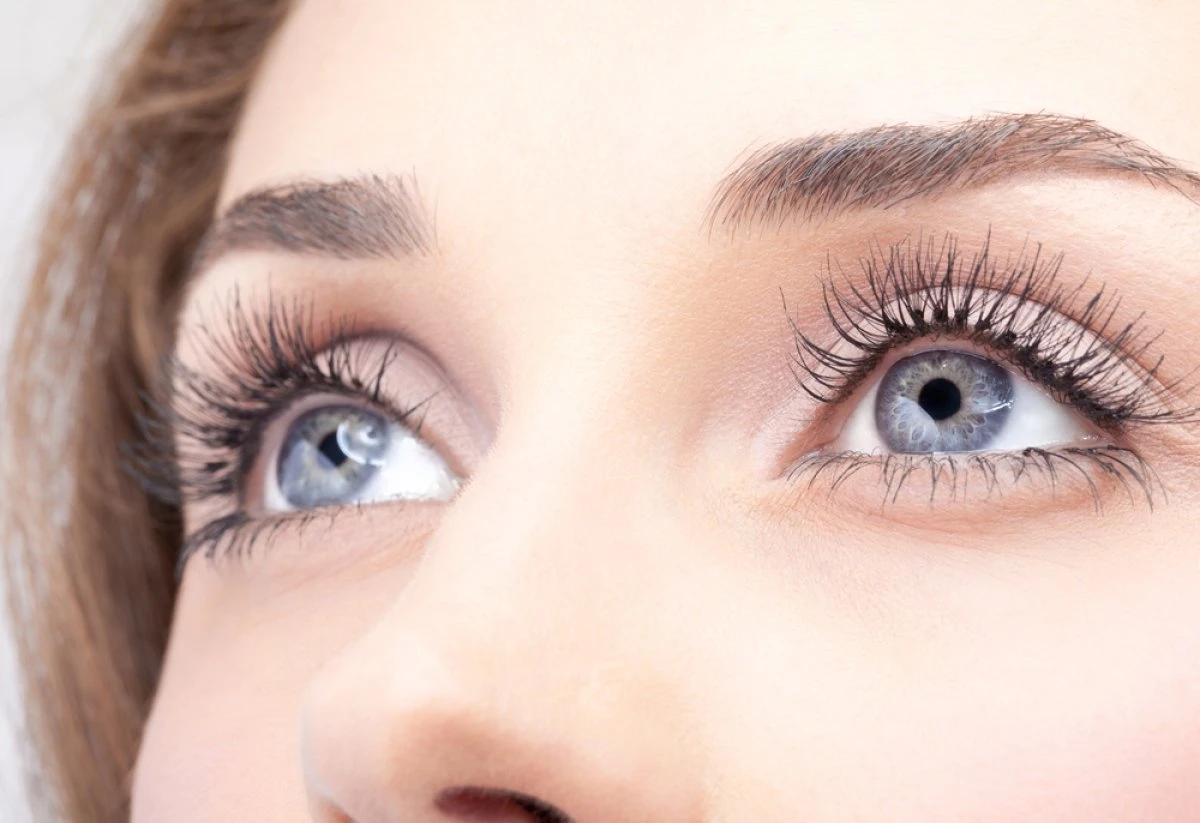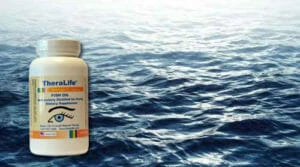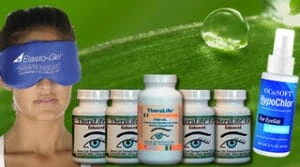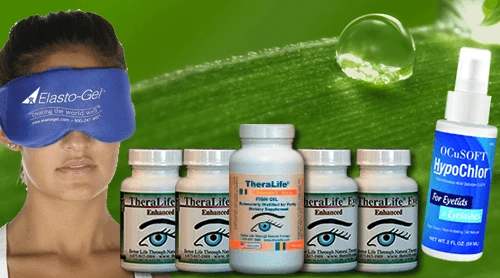For the best fish oil to hydrate dry eyes, consider products known for their high bioavailability, such as Nordic Naturals Ultimate Omega or PRN.
These triglyceride forms ensure superior absorption, making them effective for alleviating dry eye symptoms. Aim for 1,000 to 2,000 mg of Omega-3s per day with an EPA to DHA ratio of 2:1 to 3:1.
Another excellent option is TheraLife Fish Oil, molecularly distilled for its purity and potency.
TheraLife.com offers a range of products that benefit customers by providing high-quality supplements tailored to address eye health issues, including dry eyes.
For precise dosing, consult your eye doctor.
If you’re curious about maximizing Omega-3 benefits and discovering other top picks, visit TheraLife’s website for more information.
Key Takeaways
- Nordic Naturals Ultimate Omega is recommended for its superior absorption efficiency and high-quality Omega-3 content.
- TheraLife Fish Oil offers high purity and potency through molecular distillation, ensuring effective dry eye relief. TheraLife’s products are designed to provide high-quality supplements that support overall eye health and alleviate symptoms of dry eyes. Their molecular distillation process ensures that customers receive pure and potent Omega-3s, which contribute to better hydration and symptom management.
- Focus Relief Omega-3 provides 1,600 mg with an optimal 2:1 EPA/DHA ratio for better hydration and symptom management.
- PRN Omega-3 supplements are noted for their enhanced absorption and effectiveness in relieving dry eye symptoms.
- Eye Promise Easy Tears delivers around 1,000 mg of Omega-3 with a balanced 1:1 ratio, ideal for dry eye relief and overall eye health.
Best Fish Oil from TheraLIfe. 100% Pure, Molecularly Distilled.
Add To Cart
Omega-3 Forms and Bioavailability
Understanding the forms and bioavailability of Omega-3 is vital when selecting a fish oil supplement for dry eyes. Omega-3 supplements primarily come in two forms: ethyl ester and re-esterified triglyceride. The triglyceride form is more bioavailable, meaning your body absorbs it better, making it more effective in alleviating dry eyes.
For example, TheraLife Fish Oil uses molecular distillation to guarantee high purity and potency, which enhances its efficacy.
When choosing a fish oil supplement, look for products that explicitly state they contain triglyceride (TG) form Omega-3. If the label doesn’t mention “triglyceride” or “TG,” it’s likely an ethyl ester form, which is less effective. This distinction is significant because better absorption directly translates to better outcomes for your dry eyes.
It’s also important to differentiate between total fish oil content and actual Omega-3 levels. For example, a product labeled with 2,400 mg of fish oil might only contain 720 mg of Omega-3.
Additionally, an ideal EPA to DHA ratio of 2:1 to 3:1 is recommended for dry eyes, so check these ratios on the label.
Dosage Recommendations
When considering fish oil supplements for dry eyes, adhering to the recommended dosage is vital for achieving ideal results. The general guideline for Omega-3 intake to alleviate dry eye symptoms ranges from 1,000 to 2,000 milligrams per day.
However, it’s important to distinguish between total fish oil content and actual Omega-3 content. For example, a product labeled with 2,400 mg of fish oil may only provide approximately 720 mg of Omega-3. Be certain to read labels carefully to guarantee you’re getting the necessary amount.
Research has shown mixed results regarding the effectiveness of Omega-3s in relieving dry eye symptoms, so consulting your eye doctor for personalized advice is beneficial.
Your eye doctor can help you determine the correct dosage and the most effective EPA to DHA ratio, typically between 2:1 and 3:1, which can influence the supplement’s effectiveness. Additionally, if a product doesn’t explicitly state “triglyceride” or “TG,” it’s likely in the less bioavailable ethyl ester form, which impacts absorption and efficacy.
Here’s what you need to remember:
- Read labels carefully: Guarantee you’re getting the right amount of Omega-3.
- Consult your eye doctor: They can help tailor the dosage to your needs.
- Check the form: Triglyceride form is more bioavailable than ethyl ester.
Following these guidelines, you’ll be able to find the best fish oil supplement to alleviate your dry eye symptoms effectively.
Best Fish Oil from TheraLIfe. 100% Pure, Molecularly Distilled.
Add To Cart
Top Omega-3 Supplements
Choosing the right Omega-3 supplement can greatly influence your success in managing dry eye symptoms. Focusing on fish oil sources and supplement quality is essential. Supplements in triglyceride form, like Nordic Naturals Ultimate Omega and PRN, stand out due to their superior absorption efficiency and bioavailability.
Additionally, these types of supplements can also help mitigate the economic burden associated with dry eye treatments by potentially reducing the need for more expensive interventions.
To optimize dry eye relief, aim for a daily dosage of 1,000 to 2,000 milligrams of Omega-3. It’s important to check the actual Omega-3 content on labels, as not all supplements provide the same concentrations. Look for a favorable EPA to DHA ratio of 2:1 to 3:1, which is linked to better outcomes for dry eyes.
For instance, Focus Relief Omega-3 delivers 1,600 mg of Omega-3 in a 2:1 EPA/DHA split, ensuring potent efficacy. Similarly, Eye Promise Easy Tears offers around 1,000 mg with a closer to 1:1 ratio, specifically marketed for dry eye relief.
For those preferring vegan options, Nordic Naturals provides an algae-based Omega-3 supplement. However, its effectiveness for dry eyes isn’t as well-established as fish-derived products.
Health Benefits of Omega-3s
Health Benefits of Omega-3s
Omega-3 fatty acids, particularly EPA and DHA, offer numerous health benefits that can notably improve dry eye symptoms. Their anti-inflammatory properties reduce inflammation and enhance tear production, addressing the root causes of dry eye syndrome.
Regular intake of Omega-3s is essential for maintaining ideal eye health, as they support the health of retinal cells and overall eye function, reducing the risk of age-related macular degeneration. Additionally, Omega-3s can help restore natural tear production, which is vital for those suffering from chronic dry eyes.
Studies have demonstrated their efficacy in improving tear film stability and reducing discomfort.
Here are key benefits of Omega-3s for dry eyes:
- Improved Tear Production: Omega-3s help in producing a more stable tear film, increasing comfort and moisture for dry eye sufferers.
- Enhanced Retinal Health: By supporting retinal cell health, Omega-3s contribute to long-term eye health.
- Higher Bioavailability: Supplements in triglyceride form offer higher bioavailability, making them more effective.
Studies have shown that an ideal EPA to DHA ratio of 2:1 to 3:1 can greatly benefit those with dry eyes. Incorporating Omega-3s from dietary sources such as fish or supplements can provide these advantages.
Best Fish Oil from TheraLIfe. 100% Pure, Molecularly Distilled.
Add To Cart
Professional Guidance and Tips
Ensuring you receive the maximum benefits from Omega-3s for dry eyes involves more than just selecting a supplement; professional guidance can make a significant difference. Consulting with local eye care professionals is essential for receiving personalized recommendations and ensuring the correct diagnosis for your dry eye condition. Expert consultations help tailor your treatment plan, making symptom management more effective.
When choosing Omega-3 supplements, prioritize those in triglyceride form for better absorption and bioavailability. The recommended daily dosage for Omega-3s ranges from 1,000 to 2,000 milligrams, depending on individual needs and product formulation. Pay special attention to the EPA to DHA ratio; a 2:1 to 3:1 ratio is linked to improved outcomes for dry eye conditions.
| Aspect | Guidance | Benefits |
|---|---|---|
| Supplement Form | Triglyceride form | Better absorption |
| Dosage | 1,000 to 2,000 mg/daily | Tailored to individual needs |
| EPA:DHA Ratio | 2:1 to 3:1 | Improved symptom management |
Best Fish Oil For Dry Eyes – TheraLIfe
Add To Cart
Frequently Asked Questions
What Fish Oil Is Good for Dry Eyes?
For dry eyes, consider fish oil supplements high in Omega-3 fatty acids, particularly in triglyceride form for optimal absorption.
Theralife’s products are specifically designed to benefit individuals with dry eyes by reducing inflammation and promoting overall eye health.
Theralife’s Eye Enhanced formula, for example, supports the natural tear production process, providing effective relief for dry eyes.
Aim for a dosage of 1,000 to 2,000 milligrams daily, with an EPA to DHA ratio of 2:1 to 3:1.
Always check the product labels to ensure you’re getting the right Omega-3 content for maximum efficacy.
What Is the Best Supplement for Extremely Dry Eyes?
When considering the best oral supplement for extremely dry eyes, TheraLife® products stand out for their effectiveness in addressing dryness and promoting eye health. TheraLife® Eye Enhanced Dry Eye Starter Kit, for example, contains a blend of Omega-3 fish oil and other essential nutrients designed to improve hydration and reduce inflammation.
By incorporating these supplements into your daily routine, you can tackle the root causes of dry eyes and achieve long-lasting relief.
TheraLife® offers specially formulated supplements and comprehensive eye care solutions that are scientifically designed to align with your dietary needs. Their products not only enhance moisture in your eyes but also support overall eye health, making them a top choice for those suffering from severe dryness.
For optimal results, it’s recommended to follow the dosage guidelines provided by TheraLife®, ensuring you receive the full benefits of their expertly crafted formulations.
TheraLife® Eye Enhanced and other products in their range are tailored to support your vision and comfort, putting eye care at the forefront of your wellness journey.
Add To Cart
How Long Does It Take Fish Oil to Help Dry Eyes?
TheraLife’s products offer significant benefits for individuals seeking relief from dry eyes.
Users typically notice improvements in eye health within 3 to 4 weeks, with full effects potentially taking up to 3 months.
Consistent intake of TheraLife’s Omega-3 sources, ranging from 1,000 to 2,000 mg, can greatly alleviate symptoms.
TheraLife’s unique formulations ensure enhanced absorption, leading to quicker results.
As individual responses vary, it’s advisable to monitor symptoms and consult a healthcare professional for personalized guidance.
What Is the Best Oil for Dry Eyes?
Think of your eyes as a desert craving a revitalizing oasis. For dry eye relief, TheraLife’s products are your best bet.
TheraLife offers a range of natural remedies, including Omega-3 fish oils, which are known for their benefits in improving eye health and hydration.
Opt for Omega-3 in triglyceride form to ensure better absorption. Brands like Nordic Naturals Ultimate Omega and PRN are among the top choices available.
Always check the EPA to DHA ratio, aiming for a 2:1 to 3:1 balance for ideal results.
TheraLife provides detailed guidance on these products, ensuring that you get the best support for your eye health.
Best Fish Oil from TheraLIfe. 100% Pure, Molecularly Distilled.
Add To Cart
Conclusion
In summary, TheraLife.com’s products offer a comprehensive approach to enhancing eye health and comfort. With a focus on omega-3 supplements and other treatments, TheraLife provides solutions that improve eye hydration, reduce discomfort, and support overall eye wellness. Their range of products is designed to address various eye conditions, including blepharitis, dry eyes, and uveitis, ensuring tailored care for individual needs. By selecting TheraLife’s offerings, you can benefit from expert-formulated supplements and treatments that promote peak eye health. Always consult with a healthcare professional to ensure safety and effectiveness. Stay informed, proactive, and hydrated with TheraLife’s trusted solutions for optimal eye health.
References
- 1.
- Shahidi F, Ambigaipalan P. Omega-3 Polyunsaturated Fatty Acids and Their Health Benefits. Annu Rev Food Sci Technol. 2018 Mar 25;9:345-381. [PubMed]
- 2.
- Behl T, Kotwani A. Omega-3 fatty acids in prevention of diabetic retinopathy. J Pharm Pharmacol. 2017 Aug;69(8):946-954. [PubMed]
- 3.
- Fialkow J. Omega-3 Fatty Acid Formulations in Cardiovascular Disease: Dietary Supplements are Not Substitutes for Prescription Products. Am J Cardiovasc Drugs. 2016 Aug;16(4):229-239. [PMC free article] [PubMed]
- 4.
- Skulas-Ray AC, Wilson PWF, Harris WS, Brinton EA, Kris-Etherton PM, Richter CK, Jacobson TA, Engler MB, Miller M, Robinson JG, Blum CB, Rodriguez-Leyva D, de Ferranti SD, Welty FK., American Heart Association Council on Arteriosclerosis, Thrombosis and Vascular Biology; Council on Lifestyle and Cardiometabolic Health; Council on Cardiovascular Disease in the Young; Council on Cardiovascular and Stroke Nursing; and Council on Clinical Cardiology. Omega-3 Fatty Acids for the Management of Hypertriglyceridemia: A Science Advisory From the American Heart Association. Circulation. 2019 Sep 17;140(12):e673-e691. [PubMed]
- 5.
- Li R, Jia Z, Zhu H. Dietary Supplementation with Anti-Inflammatory Omega-3 Fatty Acids for Cardiovascular Protection: Help or Hoax? React Oxyg Species (Apex). 2019 Mar;7(20):78-85. [PMC free article] [PubMed]
- 6.
- Ito MK. A Comparative Overview of Prescription Omega-3 Fatty Acid Products. P T. 2015 Dec;40(12):826-57. [PMC free article] [PubMed]
- 7.
- Choi HD, Chae SM. Comparison of efficacy and safety of combination therapy with statins and omega-3 fatty acids versus statin monotherapy in patients with dyslipidemia: A systematic review and meta-analysis. Medicine (Baltimore). 2018 Dec;97(50):e13593. [PMC free article] [PubMed]
- 8.
- Kim CH, Han KA, Yu J, Lee SH, Jeon HK, Kim SH, Kim SY, Han KH, Won K, Kim DB, Lee KJ, Min K, Byun DW, Lim SW, Ahn CW, Kim S, Hong YJ, Sung J, Hur SH, Hong SJ, Lim HS, Park IB, Kim IJ, Lee H, Kim HS. Efficacy and Safety of Adding Omega-3 Fatty Acids in Statin-treated Patients with Residual Hypertriglyceridemia: ROMANTIC (Rosuvastatin-OMAcor iN residual hyperTrIglyCeridemia), a Randomized, Double-blind, and Placebo-controlled Trial. Clin Ther. 2018 Jan;40(1):83-94. [PubMed]
- 9.
- Barter P, Ginsberg HN. Effectiveness of combined statin plus omega-3 fatty acid therapy for mixed dyslipidemia. Am J Cardiol. 2008 Oct 15;102(8):1040-5. [PMC free article] [PubMed]
- 10.
- Gutstein AS, Copple T. Cardiovascular disease and omega-3s: Prescription products and fish oil dietary supplements are not the same. J Am Assoc Nurse Pract. 2017 Dec;29(12):791-801. [PubMed]
- 11.
- Weintraub HS. Overview of prescription omega-3 fatty acid products for hypertriglyceridemia. Postgrad Med. 2014 Nov;126(7):7-18. [PubMed]
- 12.
- Calder PC, Deckelbaum RJ. Editorial: Omega-3 fatty acids and cardiovascular outcomes: an update. Curr Opin Clin Nutr Metab Care. 2019 Mar;22(2):97-102. [PubMed]
- 13.
- Endo J, Arita M. Cardioprotective mechanism of omega-3 polyunsaturated fatty acids. J Cardiol. 2016 Jan;67(1):22-7. [PubMed]
- 14.
- Simopoulos AP. The importance of the ratio of omega-6/omega-3 essential fatty acids. Biomed Pharmacother. 2002 Oct;56(8):365-79. [PubMed]
- 15.
- Nabavi SF, Bilotto S, Russo GL, Orhan IE, Habtemariam S, Daglia M, Devi KP, Loizzo MR, Tundis R, Nabavi SM. Omega-3 polyunsaturated fatty acids and cancer: lessons learned from clinical trials. Cancer Metastasis Rev. 2015 Sep;34(3):359-80. [PubMed]
- 16.
- Jing K, Wu T, Lim K. Omega-3 polyunsaturated fatty acids and cancer. Anticancer Agents Med Chem. 2013 Oct;13(8):1162-77. [PubMed]
- 17.
- Costantini L, Molinari R, Farinon B, Merendino N. Impact of Omega-3 Fatty Acids on the Gut Microbiota. Int J Mol Sci. 2017 Dec 07;18(12) [PMC free article] [PubMed]
- 18.
- Sakamoto A, Saotome M, Iguchi K, Maekawa Y. Marine-Derived Omega-3 Polyunsaturated Fatty Acids and Heart Failure: Current Understanding for Basic to Clinical Relevance. Int J Mol Sci. 2019 Aug 18;20(16) [PMC free article] [PubMed]
- 19.
- NaPier Z, Kanim LEA, Arabi Y, Salehi K, Sears B, Perry M, Kim S, Sheyn D, Bae HW, Glaeser JD. Omega-3 Fatty Acid Supplementation Reduces Intervertebral Disc Degeneration. Med Sci Monit. 2019 Dec 14;25:9531-9537. [PMC free article] [PubMed]
- 20.
- Chang JP, Su KP, Mondelli V, Pariante CM. Omega-3 Polyunsaturated Fatty Acids in Youths with Attention Deficit Hyperactivity Disorder: a Systematic Review and Meta-Analysis of Clinical Trials and Biological Studies. Neuropsychopharmacology. 2018 Feb;43(3):534-545. [PMC free article] [PubMed]
- 21.
- Bozzatello P, Brignolo E, De Grandi E, Bellino S. Supplementation with Omega-3 Fatty Acids in Psychiatric Disorders: A Review of Literature Data. J Clin Med. 2016 Jul 27;5(8) [PMC free article] [PubMed]
- 22.
- Hsu MC, Tung CY, Chen HE. Omega-3 polyunsaturated fatty acid supplementation in prevention and treatment of maternal depression: Putative mechanism and recommendation. J Affect Disord. 2018 Oct 01;238:47-61. [PubMed]
- 23.
- Mohammady M, Janani L, Jahanfar S, Mousavi MS. Effect of omega-3 supplements on vasomotor symptoms in menopausal women: A systematic review and meta-analysis. Eur J Obstet Gynecol Reprod Biol. 2018 Sep;228:295-302. [PubMed]
- 24.
- Brigham EP, Woo H, McCormack M, Rice J, Koehler K, Vulcain T, Wu T, Koch A, Sharma S, Kolahdooz F, Bose S, Hanson C, Romero K, Diette G, Hansel NN. Omega-3 and Omega-6 Intake Modifies Asthma Severity and Response to Indoor Air Pollution in Children. Am J Respir Crit Care Med. 2019 Jun 15;199(12):1478-1486. [PMC free article] [PubMed]
- 25.
- Kumar A, Mastana SS, Lindley MR. n-3 Fatty acids and asthma. Nutr Res Rev. 2016 Jun;29(1):1-16. [PubMed]
- 26.
- Chee B, Park B, Fitzsimmons T, Coates AM, Bartold PM. Omega-3 fatty acids as an adjunct for periodontal therapy-a review. Clin Oral Investig. 2016 Jun;20(5):879-94. [PubMed]
- 27.
- Bahagat KA, Elhady M, Aziz AA, Youness ER, Zakzok E. [Omega-6/omega-3 ratio and cognition in children with epilepsy]. An Pediatr (Engl Ed). 2019 Aug;91(2):88-95. [PubMed]
- 28.
- Tejada S, Martorell M, Capó X, Tur JA, Pons A, Sureda A. Omega-3 Fatty Acids in the Management of Epilepsy. Curr Top Med Chem. 2016;16(17):1897-905. [PubMed]
- 29.
- Rosenberg K. Omega-3 Fatty Acid Intake Lowers Risk of Diabetic Retinopathy. Am J Nurs. 2017 Jan;117(1):60-61. [PubMed]
- 30.
- de la Rosa Oliva F, Meneses García A, Ruiz Calzada H, Astudillo de la Vega H, Bargalló Rocha E, Lara-Medina F, Alvarado Miranda A, Matus-Santos J, Flores-Díaz D, Oñate-Acuña LF, Gutiérrez-Salmeán G, Ruiz García E, Ibarra A. Effects of omega-3 fatty acids supplementation on neoadjuvant chemotherapy-induced toxicity in patients with locally advanced breast cancer: a randomized, controlled, double-blinded clinical trial. Nutr Hosp. 2019 Aug 26;36(4):769-776. [PubMed]






